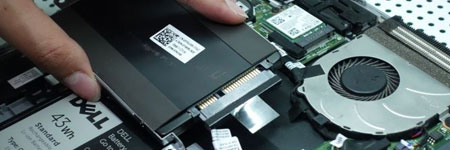Finding the Best Memory Replacement.


Understanding RAM and Its Importance
Every component in your computer plays a vital role in its performance, and RAM (Random Access Memory) is no exception. While many believe that “more RAM is better,” that’s not always the case. Choosing the right RAM for your laptop or desktop requires understanding compatibility, specifications, and upgrade options.
How to Upgrade Laptop Memory
1. Identify Your Current RAM Type
Laptops and desktops use different memory types, such as DRAM, DIMM, SO-DIMM, DDR, DDR2, DDR3, and DDR4. The specific type your system supports depends on the motherboard and manufacturer. If your laptop’s manual doesn’t specify the correct memory type, visit the manufacturer’s website and search using the model number.
Alternatively, online tools from brands like Kingston and Crucial can help identify the exact RAM type compatible with your laptop. Simply enter your laptop’s make and model, and the tool will generate a list of supported upgrades.
2. Signs That Your RAM Needs Replacement or Upgrade
If your laptop experiences frequent crashes, slow performance, or error messages at startup, a failing or insufficient memory module could be the cause. Insufficient RAM can lead to performance bottlenecks, making multitasking and demanding applications sluggish.
3. Locating and Replacing the RAM Module
The location of RAM modules varies across laptops:
- Some are easily accessible via a removable panel on the bottom of the laptop.
- Others are located under the keyboard (common in IBM, Dell, and Acer models).
- A few models require removing the hard drive or disassembling the casing.
Consult your laptop’s manual or manufacturer’s website for specific disassembly instructions.
4. Installation Process
- Power off your laptop and unplug it.
- Remove the battery for safety.
- Open the memory compartment panel.
- Handle the RAM module carefully to avoid static damage (use an anti-static wrist strap).
- Align the new RAM module correctly—it only fits one way.
- Insert the module into the slot at an angle, then press it down until it clicks into place.
- Reassemble your laptop and power it on.
Precautions When Replacing RAM
- Avoid static discharge – Always ground yourself before handling memory modules.
- Check voltage compatibility – Some laptop models require specific voltage ratings.
- Verify motherboard support – Not all laptops support maximum RAM capacity, so check manufacturer specifications.
- Do not force the RAM module – If it doesn’t fit easily, it’s either inserted incorrectly or the wrong type.
A Common RAM Upgrade Mistake to Avoid
A colleague once attempted to swap RAM between two laptops of the same model but different revisions without checking compatibility. The result? A fried memory module and a damaged motherboard. Always verify compatibility before upgrading or replacing RAM.
Conclusion
Upgrading or replacing your laptop’s RAM is one of the easiest ways to boost performance and extend its lifespan. With proper research and installation, you can enhance your system’s multitasking abilities, speed up application performance, and prevent frequent crashes. Always double-check your laptop’s compatibility, handle components with care, and follow best practices to ensure a smooth RAM upgrade experience.
How to Replace your Laptop HDD.


Understanding Laptop Hard Drives
A laptop’s hard drive is one of its most critical components, responsible for storing your operating system, applications, and personal data. Unfortunately, due to frequent movement and shocks, laptop hard drives are more prone to failure than their desktop counterparts. If your hard drive fails, replacing it is one of the few hardware upgrades you can perform on a laptop.
Steps to Replace Your Laptop Hard Drive
1. Backup Your Data
Before attempting to replace your hard drive, back up your important files to an external drive or cloud storage. If possible, create a disk image to restore your system easily after replacement.
2. Identify Your Hard Drive Type
Laptops use either IDE (older models) or SATA (modern models) hard drives. SSDs (Solid State Drives) are also an excellent upgrade option for better speed and reliability.
3. Locate the Hard Drive Compartment
Most laptops have a designated hard drive bay, usually accessible by removing a small panel on the bottom. However, in some models, the hard drive is placed under the keyboard or inside the casing, requiring more effort to access. Consult your laptop’s manual or visit the manufacturer’s website for specific instructions.
4. Remove the Old Hard Drive
- Power off your laptop and disconnect it from any power source.
- Remove the battery for safety.
- Unscrew the hard drive compartment cover.
- Carefully slide out the old hard drive. Some drives are secured with brackets—remove them if necessary.
- Be mindful of electrostatic discharge (ESD), which can damage components. Use an anti-static wrist strap or touch a grounded metal surface before handling internal parts.
5. Install the New Hard Drive
- If upgrading to an SSD, ensure it’s the same size (2.5 inches) as your old drive.
- Insert the new drive into the slot and secure it with screws or brackets.
- Reattach the compartment cover.
6. Reinstall the Operating System
After replacing your hard drive, you’ll need to reinstall your operating system. If you created a backup image, restore it; otherwise, install Windows, macOS, or Linux from a bootable USB or recovery disk.
Tips for Maintaining Your New Hard Drive
- Back up regularly to avoid data loss in case of failure.
- Use SSDs instead of traditional HDDs for better durability and speed.
- Avoid excessive movement while your laptop is running to reduce mechanical wear.
- Enable TRIM (for SSDs) to optimize performance and longevity.
Conclusion
Replacing a laptop hard drive is a simple but essential skill that can save you money on repairs and prolong your laptop’s lifespan. By backing up your data, choosing the right replacement drive, and carefully following the installation steps, you can ensure a smooth and hassle-free upgrade.
